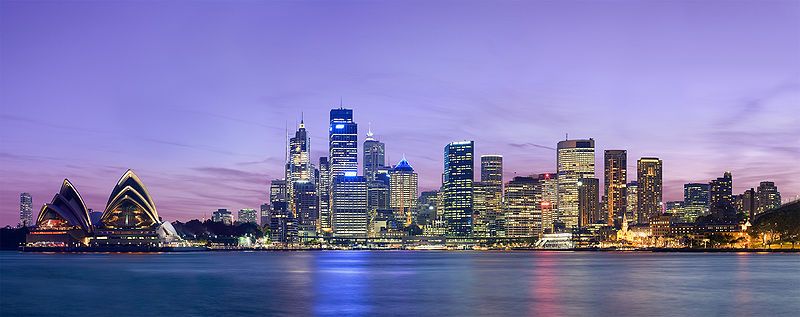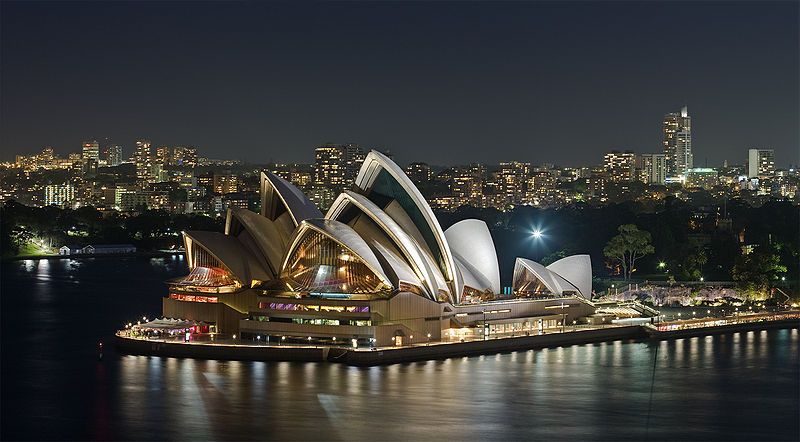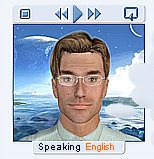Australia: The new continent: A place which Paco wished to visit
Students of English frequently find it difficult to understand and use relative clauses in English. For this reason, on this occasion, syntax will be mainly studied in topics 2, 3 and 4, dealing mainly with relative clauses. In topic 2, we will focus first on the difference between defining and non-defining relative clauses in English. Later, in the topic, the former, that is, defining relative clauses, will be studied.
Attention to two other vowel sounds /u/ and /u:/ is also paid in the topic.
Paco is ready to visit Sydney, which is the largest city in Australia and the state capital of New South Wales. Sydney has an estimated population of 4.4 million and is one of the most multicultural cities in the world. Lots of tourists visit it every year. As Paco leaves the hotel, he reflects that this is a place which he really wanted to visit, so he is really happy to be there. Thanks to his studies, he knows that Sydney was the site of the first British colony in Australia. It was established in 1788 at Sydney Cove by Arthur Phillip, who was a commodore of the well known First Fleet. The city is built on hills surrounding Sydney Harbour – an inlet of the Tasman Sea on Australia's south-east coast. It is home to the iconic Sydney Opera House, the Harbour Bridge and its beaches. The metropolitan area is surrounded by national parks, where the tourists spend many hours enjoying nature.
 |
| By Diliff. C. Commons |
Paco will first go to the Opera House. After taking a taxi to get there, at the entrance he takes a brochure and reads something about this magnificent building:
Planning for the Sydney Opera House began in the late 1940s, when Eugene Goossens, the Director of the NSW State Conservatorium of Music, lobbied for a suitable venue for large theatrical productions. The normal venue for such productions, the Sydney Town Hall, was not considered large enough. By 1954, Goossens succeeded in gaining the support of NSW Premier Joseph Cahill, who called for designs for a dedicated opera house. It was also Goossens who insisted that Bennelong Point be the site for the Opera House. Cahill had wanted it to be on or near Wynyard Railway Station in the northwest of the CBD (Sydney central business district).
 |
| By Diliff. C. Common |
A design competition was launched by Cahill on 13 September 1955 and received 233 entries, representing architects from 32 countries. The criteria specified a large hall seating 3000 and a small hall for 1200 people, each to be designed for different uses, including full-scale operas, orchestral and choral concerts, mass meetings, lectures, ballet performances and other presentations. The winner, who was announced in 1957, was Jørn Utzon, a Danish architect. The prize was £5,000. Utzon visited Sydney in 1957 to help supervise the project. His office moved to Sydney in February 1963.
1 Adapted from Wikipedia.org
Read the passage carefully. Then, answer the following questions:
1. According to the text, why was Sydney Opera House built?
2. According to the text, did the project for building Sydney Opera House attract much interest?
3. Which Englishman is considered one of the most important founders of Australia?
What is a relative clause?
The first thing we must know is what a relative clause is. A relative clause is a subordinate clause that modifies a noun. Since they always refer to antecedents that are nouns, it is important to remember that relative clauses are placed immediately after the noun they modify. E.g.:
1. That is the building which Paco wished to visit in Sidney.
2. Arthur Phillip, who was a commodore, arrived in Sidney in 1788.
In sentence 1 above, "which Paco wished to visit in Sidney" is a relative clause that modifies the noun "building". In sentence 2, the relative clause is "who was a commodore", and it modifies the proper noun "Arthur Phillip".
Remember to ask Mike any word, phrase or sentence you want him to pronounce for you, he has proved to be really helpful up to now, hasn't he? Come back whenever you need him!
If Mike is not working you can also listen to the pronunciation of a word or a sentence in Google translator as long as you introduce no more than 100 printed characters and you select an English to English translation.

|
| http://text-to-speech.imtranslator.net/ |

|
Verdadero Falso
Verdadero Falso
Verdadero Falso